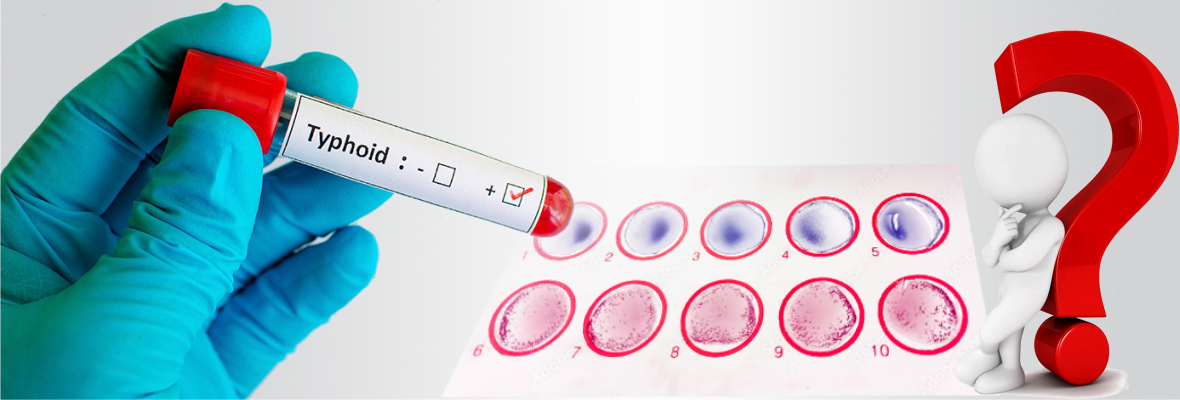Typhoid fever is a bacterial infection caused by Salmonella typhi. Diagnosing typhoid fever accurately and reliably is crucial for appropriate treatment and management of the disease. There are several tests available for diagnosing typhoid fever, and each has its own advantages and limitations. Two of the most commonly used tests for typhoid diagnosis are:
1. Blood Culture: It is considered the gold standard test for diagnosing typhoid fever as detects the presence of Salmonella typhi bacteria. This test can provide definitive results, however takes 3-7 days to report the results .
2. Typhoid Serology: Serological tests detect specific antibodies produced by the body in response to the Salmonella typhi infection. These tests include Widal test, and Typhoid IgM/IgG Card /ELISA test :
Widal Test: The Widal agglutination test was developed by F Widal in 1896 to aid in the diagnosis of typhoid fever .This test utilises a suspension of killed Salmonella typhi as antigen, to detect the presence of antibodies against the Salmonella typhi in serum of suspected S. typhi-infected patients.The Widal test has both advantages and limitations in typhoid diagnosis:
Advantages:
Widely available: The test is relatively simple, inexpensive, and widely available in many healthcare settings.
Rapid results: The Widal test can provide results within a few hours, allowing for relatively quick diagnosis in comparison to Blood culture.
Limitations: With technical advancements ,several pitfalls have been revealed in its use and interpretation of widal test such as;
False positives: The Widal test can produce false-positive results due to cross reactivity with other non typhoid disease ; Malaria, Dengue, miliary tuberculosis, endocarditis,
chronic liver disease, brucellosis, etc in typhoid endemic regions, and thereby increase the
Positivity rate of typhoid fever..
False negatives: The test can also give false-negative results in case patient is in carrier state , particularly if conducted during the early stages of the disease or if the patient has received antibiotics prior to testing. This can lead to missed diagnosis.
Subjectivity in interpretation: The Widal test requires the interpretation of antibody titers by a trained healthcare professional. The interpretation can be subjective, and results may vary between individuals.
Variable sensitivity and specificity: The sensitivity and specificity of the Widal test can vary depending on the test methodology, the region where it is performed, and other factors.
Widal test can produce false positive results in people who have got vaccinated against typhoid fever or who have had a previous infection with a related bacterium.
Given these limitations, the Widal test is often used in conjunction with other diagnostic methods, such as blood cultures or molecular tests, to improve accuracy in typhoid fever diagnosis. These additional tests can help confirm or rule out the presence of the Salmonella typhi bacteria and provide a more reliable diagnosis.


